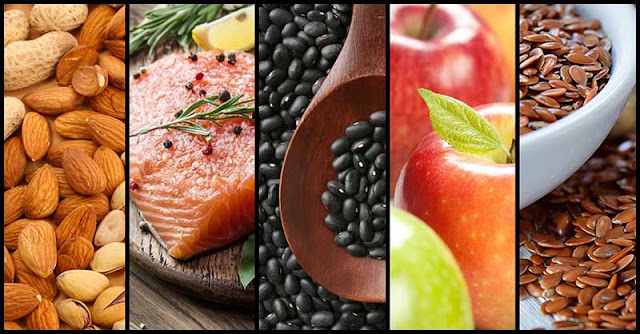We don’t want to intentionally clog our arteries but there are times wherein we are not aware that the foods we eat (such as hot dogs, full-fat cheese, or donuts) are loaded with unhealthy, artery-damaging LDL (low-density lipoprotein) cholesterol. Boosted levels of cholesterol, especially LDL — are linked to an increased risk of heart disease. Low high-density lipoprotein (HDL) cholesterol and high triglycerides are also linked to the same risk.
The foods we consume can directly affect our cholesterol levels. There are some foods that we can add to our diet to improve the balance of the 2 types of cholesterol – LDL and HDL cholesterol.
Fatty Fish
Fatty fish are rich in omega-3 fatty acids, a healthy fat that increases HDL cholesterol and lower down levels of inflammation and stroke risk.
Results of the research revealed that eating tuna or other baked or broiled fish at least once a week can help adults lower their stroke rate by 27%.
Also, In a study, adults who ate the most non-fried fish were the least likely to develop metabolic syndrome, a cluster of conditions that increases our risk of high blood pressure, and lowers HDL levels.
Some of the fatty fishes that we can add to our diet are salmon, sardines, herring, and mackerel.
Black Beans
Among legumes, black beans are the richest source of soluble fiber which is a cholesterol-lowering agent. A 1/2 cup of cooked black beans carry nearly twice the soluble fiber of oats. This soluble fiber is concentrated in the inner part of the bean.
Start with 1/2 cup per day and work up to a cup of black beans or any kind of bean to make the biggest impact on cholesterol.
Flaxseeds
Flax seeds are a rich source of the alpha-linolenic acid (ALA), an omega-3 fatty acid that may help lower our risk of heart disease. Additionally, flaxseeds also have high fiber content that can help lower cholesterol and may play an important role in improving heart health.
In one study involving people with high cholesterol, intake of 3 tablespoons (30 grams) of flaxseed powder daily for three months lowered total cholesterol by 17% and LDL cholesterol by almost 20%.
Also, consuming 30 grams of flax seeds daily by postmenopausal women was found to lower down total cholesterol and LDL cholesterol by approximately 7% and 10%, respectively.
One to two tablespoons per day seems like a good place to start adding flaxseeds to our diet. Keep in mind, seeds need to be ground in order to be digested.
Nuts
Eating nuts like walnuts, peanuts, hazelnuts, almonds, pistachios, pecans, and other nuts and seeds are great for controlling high cholesterol as they are significantly high in fiber and plant sterols.
Walnuts, in particular, are rich in polyunsaturated fats and the only nut source of plant-based omega-3 fatty acids, walnuts are a star food for cardiovascular health. They have been reported to help lower total triglyceride and cholesterol levels.
Snack on a handful or 1 and ½ ounces of delicious roasted nuts regularly to enjoy this benefit. Just remember not to overdo it.
Apples
Apples contain antioxidant compounds that may help inhibit the oxidation of LDL cholesterol. Oxidation of LDL cholesterol is what leads to plaque buildup in arteries. Aside from this, the fruit is also rich in soluble fiber and has lowering-cholesterol abilities.
A 2011 study by Florida State University, reported that older women participants who consumed apples daily experienced reduced levels of LDL cholesterol by 23% within 6 months, and increased HDL cholesterol levels by 4%.









